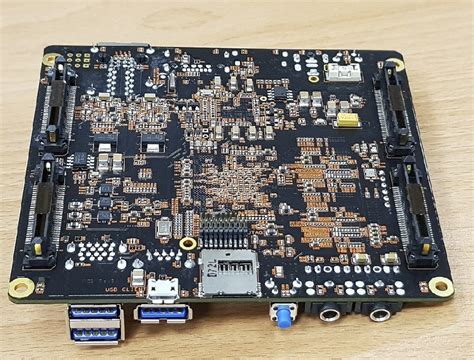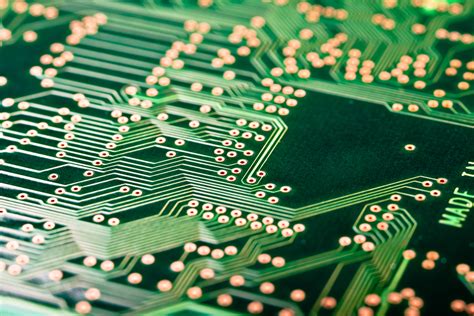Revolutionizing Circuit Manufacturing: Trends and Innovations Ahead
Key Takeaways
In the realm of pcb manufacturing, understanding the current landscape is essential for staying competitive. The evolution of pcb manufacturing companies is driven by the relentless push for innovation and efficiency. As you consider your options, pay attention to the emerging trends that are transforming this sector. For instance, advancements in technology have dramatically lowered pcb manufacturing costs, allowing even small businesses to enter the market. By leveraging sophisticated software and automated processes, you can enhance production capabilities while maintaining quality. This shift not only improves your bottom line but can also position your pcb manufacturing business for future growth. Furthermore, recognizing how sustainability practices are becoming integral to manufacturing processes can set you apart from competitors. Adapting to these changes will not only bolster your reputation but will also appeal to a market that increasingly values environmentally conscious production methods. By keeping abreast of these trends and integrating them into your strategies, you can navigate the complexities of modern circuit manufacturing with confidence.
Revolutionizing Circuit Design: Embracing Advanced Technologies
In the ever-evolving landscape of pcb manufacturing, the integration of advanced technologies is transforming how circuits are designed and produced. As you navigate through this dynamic field, you will discover that pcb manufacturing companies are increasingly adopting innovative tools and methodologies to enhance production efficiency and design precision. Techniques such as automated design tools, which utilize sophisticated algorithms, enable you to create complex layouts with unprecedented accuracy while significantly reducing the pcb manufacturing cost. Furthermore, the application of additive manufacturing techniques is expanding the possibilities for circuit creation, allowing for intricate designs that were previously unattainable with traditional methods. This ongoing shift towards advanced technologies presents new opportunities within your pcb manufacturing business, empowering you to remain competitive in a market that demands both performance and sustainability. As you embrace these innovations, you’ll find that they not only streamline your production processes but also contribute to higher-quality outcomes in circuit design, ultimately redefining what is possible in this exciting industry.
Emerging Trends in Circuit Manufacturing: A Look Ahead
As you delve into the future of circuit manufacturing, you’ll find that significant changes are on the horizon. The shift towards smart manufacturing provides tremendous potential for enhancing efficiency and productivity in pcb manufacturing. Cutting-edge technologies such as 3D printing and automation are reshaping how pcb manufacturing companies operate, allowing for faster production times and reduced costs. One critical trend is the increasing emphasis on sustainability. Many firms are beginning to adopt eco-friendly practices that minimize waste and energy usage, ensuring that their pcb manufacturing business aligns with modern environmental standards.
Moreover, the integration of advanced data analytics tools in design processes is transforming how manufacturers approach circuit creation, making it possible to produce more complex designs while managing pcb manufacturing costs more effectively. As these trends continue to evolve, you may want to keep an eye on potential partnerships with innovative firms that can offer cutting-edge solutions tailored to your needs.
“Staying ahead in pcb manufacturing requires a commitment to embracing emerging technologies and trends.”
By doing so, you’ll position yourself favorably within this dynamic industry landscape.
Innovations in Materials for Enhanced Circuit Performance
In today’s fast-paced technological landscape, innovations in materials are pivotal to improving circuit performance. As you explore the world of pcb manufacturing, you will find that advances in material science directly influence the efficiency, reliability, and cost-effectiveness of circuit boards. For instance, the advent of high-frequency laminates and low-loss materials has emerged as game-changers, allowing for reduced signal degradation and enhanced performance in high-speed applications. Moreover, the focus on sustainable alternatives is driving evolution as pcb manufacturing companies seek eco-friendly options that do not compromise quality. The rise of composites and novel polymers is particularly noteworthy, providing increased thermal resistance and mechanical stability while lowering the overall pcb manufacturing cost. If you are part of the pcb manufacturing business, aligning with these material innovations can significantly impact your competitive advantage, as they open new avenues for design capabilities and functionality that were previously unattainable. As these materials continue to evolve, you can expect your designs to meet ever-increasing demands for miniaturization, performance, and sustainability in circuit design.
The Role of AI and Machine Learning in Circuit Production
As you navigate the dynamic landscape of pcb manufacturing, it’s increasingly clear that AI and machine learning are transforming the way circuits are designed and produced. These advanced technologies enhance efficiency, reduce production times, and minimize costs, making them indispensable for pcb manufacturing companies aiming to stay competitive. By leveraging data analytics and predictive modeling, manufacturers can optimize processes, foresee potential production hurdles, and even automate complex design tasks. This means that the pcb manufacturing cost can be significantly reduced while maintaining high quality standards. Furthermore, AI-driven tools facilitate not just production efficiency but also innovation—enabling you to introduce sophisticated designs that were once seen as unattainable in your pcb manufacturing business. As you embrace these technologies, your operations can become more agile and responsive to market demands, setting the stage for sustained growth in a rapidly evolving industry.
Sustainable Practices in Circuit Manufacturing: A New Era
As the demand for electronics continues to escalate, sustainable practices in circuit manufacturing have emerged as a critical focus for both pcb manufacturing companies and those engaged in the broader pcb manufacturing business. You may be aware that the environmental impacts of traditional processes can be considerable, driving a shift towards methods that minimize waste and improve energy efficiency. Implementing sustainable strategies not only has the potential to lower pcb manufacturing costs, but it can also enhance overall product quality. From using eco-friendly materials to adopting energy-efficient technologies, there are various pathways you can explore to align your production processes with sustainability goals. For instance, advancements in recycling techniques for used electronic parts and circuits significantly reduce raw material consumption and waste generation. Moreover, manufacturers that prioritize these practices are likely to resonate more with consumers who value sustainability, creating greater market opportunities. By embracing sustainable approaches, you not only contribute positively to the environment but also secure a competitive edge in an increasingly eco-conscious marketplace. This new era of circuit manufacturing reflects a collective commitment towards building a greener future while innovating within the industry.
Challenges and Solutions in Modern Circuit Manufacturing
In the rapidly evolving landscape of pcb manufacturing, you may encounter a myriad of challenges that can impact the efficiency and cost-effectiveness of your projects. One significant hurdle is the rising pcb manufacturing costs, which have been driven by increased demand for advanced technology and high-quality materials. To mitigate these costs, pcb manufacturing companies are exploring automation and process optimization strategies, which not only enhance production speeds but also reduce waste. Another challenge is the complexity of modern circuit designs; as products become more intricate, ensuring reliability and performance becomes crucial. Adopting innovative materials and advanced testing methodologies can help address these issues, ensuring that your pcb manufacturing business remains at the forefront of industry standards. Moreover, collaboration between manufacturers and designers fosters better communication, allowing for a more streamlined approach to problem-solving in the circuit design process. By embracing these solutions, you can navigate the challenges inherent in modern circuit manufacturing while positioning yourself for success in an increasingly competitive market.
Future Opportunities for Growth in the Circuit Industry
As you navigate the evolving landscape of pcb manufacturing, you will find numerous opportunities for growth that can significantly impact your pcb manufacturing business. The demand for innovative electronic devices is on the rise, leading to a surge in development from both established and emerging pcb manufacturing companies. This shift not only emphasizes the importance of advancements in technology but also opens avenues for strategic partnerships and investments.
With an eye on market trends, you might consider focusing on producing specialized pcbs that cater to specific sectors, such as automotive or healthcare, where demand is rapidly increasing. Moreover, understanding the intricacies of pcb manufacturing costs can guide your pricing strategy and operational efficiency, ultimately affecting your bottom line. As new materials and techniques are developed, staying ahead in adopting these innovations will position your business as a leader in the field.
To help visualize these opportunities, consider the following table outlining potential growth areas:
| Growth Area | Description |
|---|---|
| Increased Demand | Rising demand for consumer electronics and IoT devices |
| Specialization | Focusing on niche markets such as automotive or aerospace |
| Innovation | Adopting advanced materials for better performance |
| Cost Reduction | Implementing processes that lower manufacturing costs |
| Sustainability | Embracing eco-friendly practices to attract environmentally conscious clients |
By actively engaging with these opportunities and remaining adaptable to industry changes, you can ensure that your pcb manufacturing business thrives in an increasingly competitive environment.
Global Market Dynamics Influencing Circuit Manufacturing Trends
The landscape of pcb manufacturing is rapidly evolving, shaped by various global market dynamics that you should be aware of. As demand for advanced electronics surges, pcb manufacturing companies are finding themselves at the forefront of innovation. Economic factors such as globalization and regional trade agreements are impacting the pcb manufacturing cost, enabling you as a stakeholder to explore diverse sourcing options. The increasing complexity of technology invites a shift towards automation and efficiency in the pcb manufacturing business, making it crucial for you to stay updated on the latest production techniques and technologies. Furthermore, consumer preferences for faster and more reliable electronic devices drive companies to adapt swiftly, ensuring that they not only meet but exceed market expectations. In this fast-paced environment, understanding these dynamics can provide you with a competitive edge as you navigate the ever-changing terrain of circuit manufacturing.
Conclusion
As you reflect on the transformative journey of circuit manufacturing, it becomes clear that the industry’s evolution is driven by a myriad of factors that include both technological advancements and shifting market demands. The rise of pcb manufacturing has allowed for more intricate designs and higher efficiency, enabling pcb manufacturing companies to produce components that cater to modern electronics’ complexity. A remarkable component of this evolution is the focus on pcb manufacturing cost, which directly impacts your decisions, whether you’re sourcing parts for a new project or scaling up production. In an environment brimming with innovation, understanding the nuances of the pcb manufacturing business will provide you with a competitive edge, equipping you to seize future opportunities. By keeping pace with emerging trends and adopting sustainable practices, you can be well-prepared to navigate the next era of circuit design and manufacturing. It’s an exciting time to be involved in this field, where your decisions can significantly influence not only your business outcomes but also contribute to a broader shift towards enhanced technologies and sustainable methods in circuit production.
FAQs
What is PCB manufacturing?
PCB manufacturing refers to the process of producing printed circuit boards, which are essential components in a wide range of electronic devices. This involves designing the PCB layout, fabricating it, and assembling electronic components onto it.
What are common PCB manufacturing companies?
Numerous reputable PCB manufacturing companies operate globally, offering a variety of services. These companies vary in size and capabilities, catering to both small-scale projects and large-scale industrial needs.
How is PCB manufacturing cost determined?
The PCB manufacturing cost is influenced by several factors, including material selection, layer count, complexity of the design, quantity ordered, and additional services such as assembly or testing. Understanding these variables can help you estimate your overall production budget.
What should I consider when starting a PCB manufacturing business?
When starting a PCB manufacturing business, it’s crucial to evaluate your target market, invest in the right technology for production, ensure quality control processes are in place, and understand pricing strategies to remain competitive within the industry.







